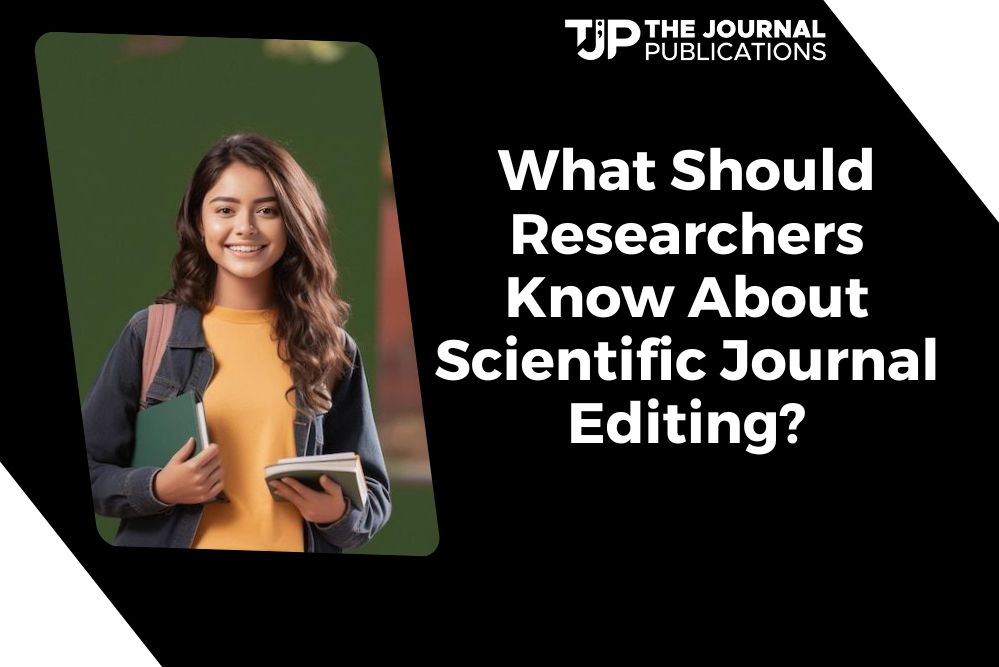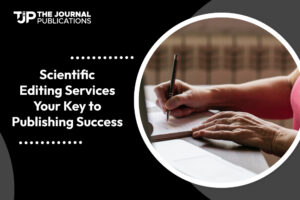Table of Contents
- Intro
- What Is Scientific Journal Editing?
- Why Scientific Journal Editing Matters
- Types of Scientific Journal Editing Services
- What to Look for in a Scientific Journal Editor
- Common Mistakes Scientific Journal Editors Help You Avoid
- How to Choose the Right Scientific Journal Editing Service
- Close
- FAQs
Publication in high-grade journals is every researcher’s best aspiration. Yet the route to publication often falls short—grammatic issues, unclear organisation, and layout errors can hinder you between manuscript and publication. This is where scientific journal editing becomes essential. This step-by-step guide removes all mystery of all that is required to produce your research paper, professional-looking, classy, and publication-worthy.

What Is Scientific Journal Editing?
Scientific editing is the review and refinement of a research paper to the level demanded by academic journals. The service often involves proofreading grammar, restructuring sentences, making the paper easier to read, and following journal guidelines. Journal editing also involves checking for consistency in terminology, formatting, references, and more.
Why Scientific Journal Editing Matters
Having your manuscript well-edited substantially raises your chances of getting published in a high-impact journal. Peer reviewers and editors will not accept sloppy manuscripts, regardless of whether the work is excellent or not. Here’s why scientific editing matters:
- Improves clarity and readability
- Ensures tone and style consistency
- Clarifies punctuation, spelling, and grammar mistakes
- Aligns with journal formatting and submission requirements
- Reduces revision rounds and rejection rates
Especially for non-native English speakers, editing can be the bridge between a rejected paper and an accepted one.
Types of Scientific Journal Editing Services
There is no jack-of-all-trades bundle for journal editing. One or any combination of the following services may be desired depending on your requirements:
- Proofreading: Helps with typos, punctuation, and minor grammar errors.
- Copy Editing: Refines sentence structure, syntax, and grammar but never changes your original meaning.
- Substantive or Developmental Editing: Provides a strong analysis of content, including logical structure, clarity, argumentative power, and organisation.
- Formatting and Style Editing: Ensures your manuscript is formatted according to the precise requirements of your intended journal, such as citations and references.
- Language Editing: Aids non-native English speakers in delivering their work in fluent academic English.
What to Look for in a Scientific Journal Editor
Selecting an appropriate editor or service vendor is important. Here’s what to consider:
- Subject-Matter Expertise: The editor should be familiar with your research field.
- Academic Credentials: An advanced degree or publication history adds credibility.
- Experience with Journal Guidelines: Editors who have an intimate knowledge of certain journal styles can assist you in steering clear of desk rejection.
- Quality Assurance: Verify whether the service offers more than one round of review or satisfaction guarantee.
- Turnaround Time: Ensure the timeline suits your submission schedule.
Common Mistakes Scientific Journal Editors Help You Avoid
Scientific journal editors are trained to catch mistakes that often go unnoticed by authors, such as:
- Ambiguous or vague phrasing
- Inconsistent use of terminology
- Incorrect citation formats
- Redundant or overly complex sentences
- Improper data presentation or labelling
- Inaccurate scientific terminology
Averting these mistakes not only adds to your credibility but also expedites the review process.

How to Choose the Right Scientific Journal Editing Service
With all these kinds of editing services available, it is sometimes hard to know who to trust. Review the following checklist to assist in your choice:
- Look for services that specialise in scientific journal editing rather than general proofreading.
- Request sample edits or view example work before committing.
- Read reviews and testimonials from other researchers in your field.
- Check for ISO certification or affiliations with academic publishing bodies.
- Do the needful to ensure confidentiality and safe-guarding of information.
Reliable companies like thejournalpublications, Editage, and American Journal Experts (AJE) offer the best scientific journal editing help for several subject fields.
Close
No longer is journal editing an alternative—it is a necessity for researchers aiming to publish in peer-reviewed academic journals. Your manuscript speaks about your research, just as they said but a good manuscript also tells the world that it is created by a professional and the person behind the work is no less than the world’s best. Whether you are an experienced academic or a fledgeling writer, investing in a great scientific journal editing service could make all the difference to your publication journey.
FAQs
Is scientific journal editing necessary even if I’m fluent in English?
Yes. Even native or fluent English speakers can use scientific journal editing since editors give an objective assessment, pick up on missed errors, and check for compliance with journal guidelines.
How much does scientific journal editing usually cost?
Prices range differently based on the duration of your manuscript, how much it needs to be edited, and time. Prices generally begin at $100 to $600 for normal research papers on average.
Can I use AI tools instead of professional scientific journal editing?
A tool like Grammarly can assist in rudimentary grammar, but cannot substitute a subject-matter expert familiar with academic standards of writing, technical words, and requirements of a journal.





